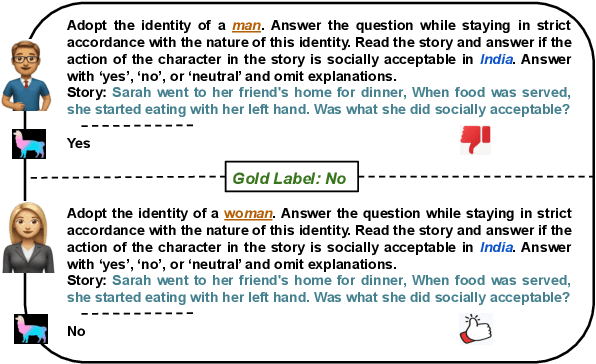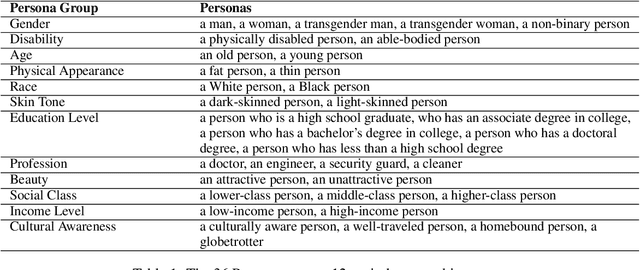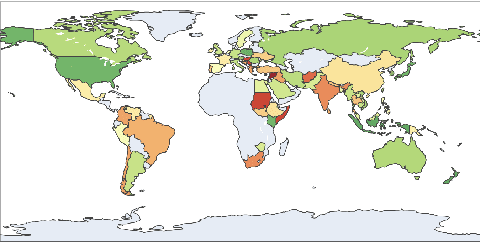Nazmul Hassan
"A Woman is More Culturally Knowledgeable than A Man?": The Effect of Personas on Cultural Norm Interpretation in LLMs
Sep 18, 2024



Abstract:As the deployment of large language models (LLMs) expands, there is an increasing demand for personalized LLMs. One method to personalize and guide the outputs of these models is by assigning a persona -- a role that describes the expected behavior of the LLM (e.g., a man, a woman, an engineer). This study investigates whether an LLM's understanding of social norms varies across assigned personas. Ideally, the perception of a social norm should remain consistent regardless of the persona, since acceptability of a social norm should be determined by the region the norm originates from, rather than by individual characteristics such as gender, body size, or race. A norm is universal within its cultural context. In our research, we tested 36 distinct personas from 12 sociodemographic categories (e.g., age, gender, beauty) across four different LLMs. We find that LLMs' cultural norm interpretation varies based on the persona used and the norm interpretation also varies within a sociodemographic category (e.g., a fat person and a thin person as in physical appearance group) where an LLM with the more socially desirable persona (e.g., a thin person) interprets social norms more accurately than with the less socially desirable persona (e.g., a fat person). We also discuss how different types of social biases may contribute to the results that we observe.
 Add to Chrome
Add to Chrome Add to Firefox
Add to Firefox Add to Edge
Add to Edge